Before purchasing any material, every consumer considers the disadvantages. Polyurethane foam is no exception. About this material, which is otherwise called PPU, every builder has heard a lot of information today.
Which material to choose
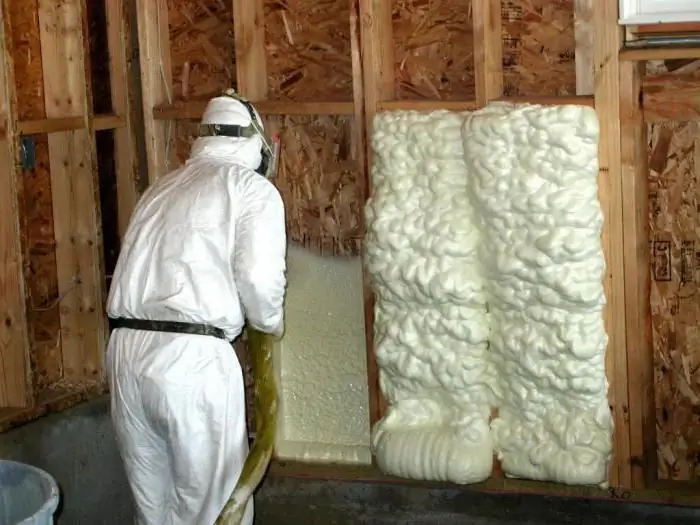
If you have ever thought about warming your home, you probably paid attention to this option as thermal insulation. Maybe he will be the best solution, because along with the shortcomings, he has many advantages.
Description

Polyurethane foam, the disadvantages of which you should be aware of before starting work on insulation, is a type of plastic. Products from it have a cellular structure. The composition of polyurethane foam includes a gaseous substance, which is contained in a volume of 85 to 90%. The whole structure consists of small cells, which are well isolated from each other by walls, it is these cells that are filled with gas. The remaining percentages of the volume are the solid part, namely thewalls.
Disadvantages of polyurethane foam as a heater is worth considering. Varieties of polyurethane foam are used quite often today, the material is popular among consumers, since it is very simple to make it, you can do it directly at the construction site. In this case, the two liquid components must be mixed, after which they will enter into a chemical reaction. If the necessary proportions of the ingredients are observed, then a polymer will be synthesized, which is represented by a hardened foam. If you slightly change the technology of preparation, then you can get polyurethane foams that differ in characteristics from each other. Some of them are suitable for insulating doors and windows, while others are suitable for thermal insulation of buildings made of reinforced concrete or brick. As for the third varieties, they are widely used for pipelines. Thus, depending on the proportions of substances, polyurethanes can be obtained at the output, which consist of many cells of different sizes. Their walls can have different thicknesses and strengths.
The main disadvantage of polyurethane foam
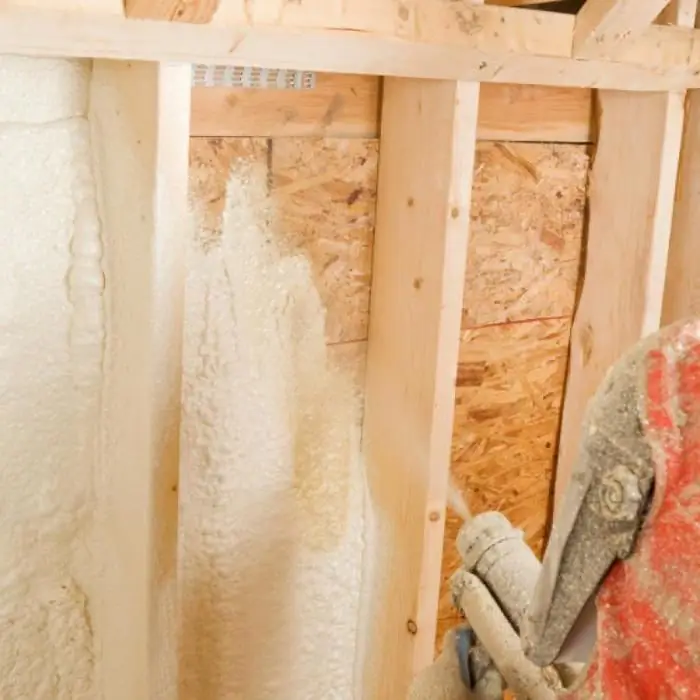
Polyurethane foam, the disadvantages of which will be presented below, can be used in many areas of construction. However, before purchasing, it is important to take a closer look at the cons of the material. The main one is the negative effect of sunlight on the surface, which can cause rapid wear of products. In order to exclude the destruction of the heat insulator, it is necessary to provide for its protection. For this you canuse plaster, ordinary paint and all kinds of panels. These are the methods that experienced builders advise.
The disadvantages of Styrofoam as wall insulation will let you know if it's worth using. The protective composition can protect the insulation from ultraviolet exposure, and also make polyurethane foam more attractive. If we consider this minus in more detail, it can be noted that the preservation of the properties of polyurethane foam will require more funds than we carry out work on insulation, which involves materials that do not require appropriate protection. Among other things, not all home craftsmen are able to perform plastering work, as well as apply coloring compositions with high quality. As a result, the surface may turn out to be even less attractive than before the refinement.
Additional minus
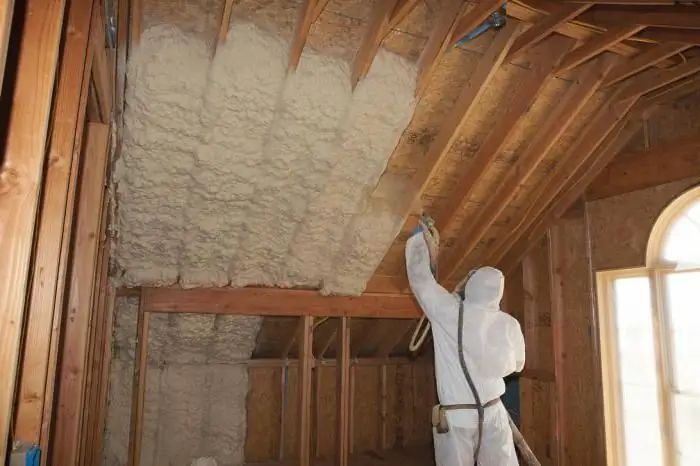
If you decide to choose polyurethane foam, the disadvantages of which for some consumers may be too impressive, then it is worth considering that this material is thermal insulation, which, when exposed to fire, begins to smolder. This shortcoming is noted by experts. Despite the fact that PPU acts as a slow-burning material, it is not able to cope with fire at 100%. According to the classification, this insulation belongs to the flammability group G-2. This indicates that ignition will not occur when exposed to low temperatures. The flame will go out, the process will stop as soon as the surface of the material can be cooled. If there is a possibility of excessive heat or the possibility of firea certain zone of insulation, then in this case polyurethane foam should not be used.
Why you should not choose PPU for home insulation
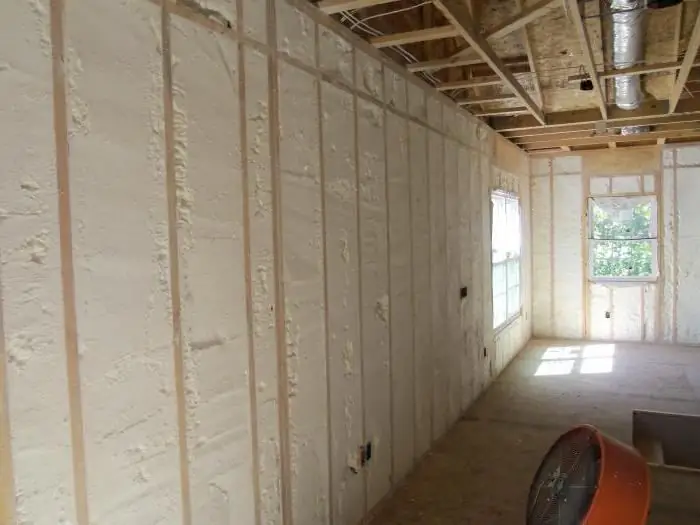
Disadvantages of insulation with polyurethane foam, of course, exist. If you decide to produce thermal insulation, then this is important to consider. If the wrong technology is used during the work, this can adversely affect the performance of the building. In order to exclude this, it is necessary to take into account some properties of the described substance. So, PPU has a low vapor permeability - this refers to a rigid variety of material. If the composition is applied to the walls, when processing the attic floor or other panels, this will certainly lead to dampness on the internal surfaces and in the structure. Dampness and mold can be mentioned as consequences, but if freezing occurs, then the supporting elements will constantly collapse. Experienced builders often note this point in their reviews.
Need for fire protection
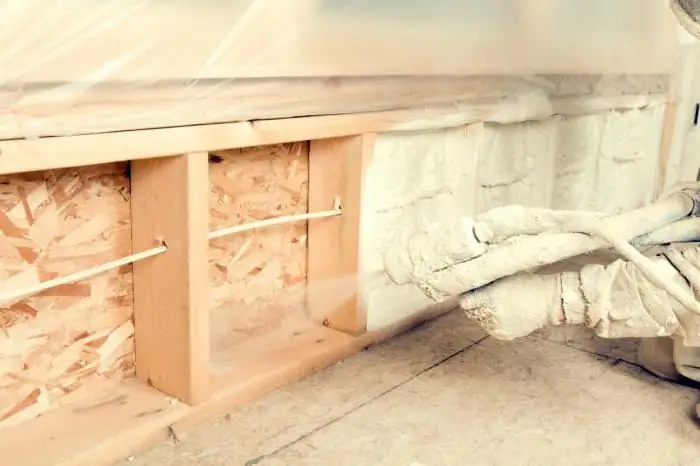
If you decide to purchase polyurethane foam, the disadvantages of customer reviews should be described in detail to you. After all, it is the negative moments that people notice in the first place. Thus, it is necessary to be prepared for the fact that over time the structure will lose its heat-insulating qualities, at best, they can only decrease. This result leads not only to the aging of the material, but also to temperature changes, as well as exposure to ultraviolet radiation. Quite often, during thermal insulation work, the spraying method is used, this provides protection from the effects of open fire. If there is no desire to create an additional fire hazard, then appropriate safety measures must be taken. They also become a source of additional expense, which does not always suit consumers.
Minus: the need to take into account the strength of the structure
Polyurethane foam, the disadvantages, reviews of which were analyzed in the article, provides for the need to correctly determine the strength of the structure. This is true in the case when the work involves blowing thermal insulation into the space between the walls. After that, the structure begins to expand, and subsequently the foam can cause destruction. Owners of private houses do not always have the opportunity to make correct calculations.
Why consumers sometimes refuse to use polyurethane foam
If you decide to use PPU, the shortcomings, feedback on the material you should be evaluated. So, it is undesirable to use it for insulation inside the building. This can cause the dew point in the outer wall to shift towards the room. In this case, the wall begins to freeze, the resulting dampness causes the spread of mold, and then the wood begins to rot. In this situation, the walls remain damp even in summer, which negatively affects the microclimate of the premises. Experts advise, if it is not possible to use analog materials, to use semi-rigid polyurethane foam. At the same time, it will be enoughlayer, the thickness of which is 30 millimeters.






